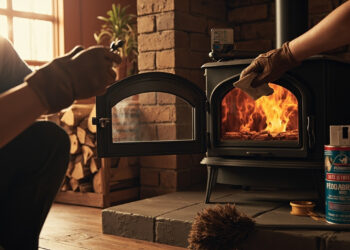Did you know that 40% of burn injuries in some regions stem from kerosene stove accidents? These incidents aren’t random occurrences but predictable consequences of improper maintenance and safety oversights. This comprehensive guide addresses the critical trifecta of risk—overpressure, fuel adulteration, and corrosion—while providing actionable protocols for daily cleaning, fuel management, and ventilation. Mastering these kerosene stove safety practices transforms your appliance from a potential hazard into a reliably safe heating and cooking solution through disciplined maintenance and operational awareness.
【Understanding the Risks: Why Proper Maintenance Matters】
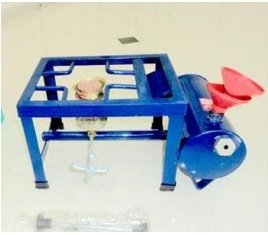
The Alarming Statistics of Kerosene Stove Accidents
Kerosene Stove Burn Injury Data
The statistics paint a clear and urgent picture of the dangers posed by improperly maintained kerosene stoves. Across the Indian territory, a staggering 40% of all burn injuries are directly attributed to kerosene stove explosions. These are not random acts of misfortune; they are predictable consequences of specific, identifiable failures. The root causes consistently point to a trifecta of risk: overpressure within the fuel tank, the use of nonstandard or substandard equipment and fuel, and the unchecked progression of corrosion. Compounding this problem is the fact that a significant number of stove manufacturers, particularly of older or cheaper models, do not integrate adequate, failsafe pressure-release mechanisms, placing the entire burden of safety on the user.
Common Kerosene Stove Hazards
Primary Causes of Malfunction
Understanding how these accidents happen is the first step toward preventing them. The primary causes of stove malfunction are often a result of user error and the inevitable wear and tear on the device.
- Fuel Adulteration: In an effort to reduce costs, kerosene is sometimes mixed with other, more volatile spirits and chemicals. This is an extremely hazardous practice. These adulterants have a much lower flash point than kerosene, meaning they can vaporize and ignite at much lower temperatures, creating a high risk of uncontrolled flare-ups or even explosion within the fuel tank.
- The “More Pump, More Heat” Fallacy: A common and dangerous misconception is that excessive pumping directly equates to higher cooking efficiency. In reality, over-pumping creates dangerously high internal pressure. This forces an excessive amount of fuel vapor through the burner, which can result in a large, unpredictable flame, a fireball upon lighting, or a leak in the fuel line. The correct operation involves pumping only enough to achieve a steady, blue flame.
- Corrosion and Poor Maintenance: A kerosene stove is a mechanical device subject to corrosion and degradation. The fuel tank, both inside and out, can rust, leading to pinhole leaks that release flammable vapor. The leather seal on the plunger can wear down, losing its ability to maintain pressure. Clogged burners or wicks from soot and debris can cause uneven burning and flare-ups. Ignoring this gradual wear and tear is a recipe for failure.
For those seeking a safer alternative, modern solutions like the 2025 EcoBlaze Portable Stove offer advanced safety features, including an automatic pressure regulation valve. Learn more and see user reviews at: https://www.ecoblaze-stoves.example/kerosene-safety.
【Essential Cleaning Protocol for Kerosene Stoves】
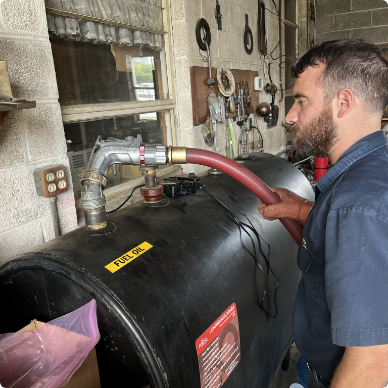
The alarming statistics of stove-related accidents underscore a critical truth: safety is not a passive state but an active practice. The most effective way to mitigate the risks of overpressure, flare-ups, and leaks is through a disciplined and informed cleaning regimen. A well-maintained stove is a safer stove. This protocol, broken down into daily and weekly tasks, is your first line of defense.
Daily Cleaning and Maintenance Routine
Consistency is key. Integrating these simple checks into your daily cooking routine takes only minutes but drastically reduces the chance of malfunctions.
Burner Nozzle Maintenance
The burner nozzle is the heart of the flame. A clogged or partially blocked nozzle is a primary cause of uneven, sooty, and dangerously unpredictable flames.
- Use Only the Specified Pin: Every stove is equipped with a specific cleaning pin. Using improvised tools like wires, needles, or toothpicks can permanently damage the precise orifice of the nozzle, leading to improper fuel vaporization. Gently insert and remove the designated pin to clear any carbon buildup only when the stove is completely cool.
- Prevent Clogging for Efficient Combustion: Regular cleaning after each use or before starting a new one prevents the accumulation of soot and carbon. A clean nozzle ensures efficient combustion, characterized by a steady, blue flame. A yellow or flickering flame is a clear sign of a clog and must be addressed immediately.
- Periodic Burner Replacement: Even with meticulous cleaning, burners degrade over time. For optimal efficiency and safety, plan to replace the stove burner periodically, as recommended by the manufacturer. A worn-out burner will never perform correctly.
Tank Cleaning Procedures
The fuel tank’s integrity is paramount to preventing the overpressure scenarios discussed earlier. Contamination is a silent threat.
- Periodic Tank Cleaning and Rinsing: Over time, sediment, moisture, and microbial growth (known as “kerosene algae”) can accumulate in the tank. This debris can clog the fuel line and burner. Periodically, empty the tank completely and rinse it with a small amount of fresh, clean kerosene. Swirl it around and dispose of the residue safely. Never use water.
- Use Only Filtered Kerosene: This is non-negotiable. Always pour kerosene through a fine mesh filter or a dedicated filtering funnel when filling the tank. This single step prevents the introduction of particulate contaminants that cause blockages and erratic burner performance.
- Ensure a Properly Sealed Filling Cap: Before and after every use, verify that the kerosene filling cap is clean, undamaged, and screws on firmly. A compromised seal will allow pressure to escape, making the stove difficult to light and operate, and can leak flammable vapors into your environment.
Weekly Deep Cleaning Checklist
Once a week, or before extended use, set aside time for a more thorough inspection. This is your opportunity to catch small problems before they become emergencies.
Comprehensive Heater Inspection
- Check for Damage, Rust, or Corrosion: Visually inspect the entire stove body, legs, and fuel tank. Pay close attention to welds and joints. Any sign of rust, particularly on the tank, is a serious concern as it can weaken the metal and lead to pinhole leaks. Surface rust on non-critical parts can be gently brushed off.
- Verify No Leaks Are Present: With the tank pressurized (but the stove not lit), carefully check all fittings, the fuel line, and the base of the tank for any signs of weeping or leaking kerosene. The smell of fuel when the stove is not in use is a major red flag.
- Ensure Air Pump Integrity: The air pump is the source of your stove’s pressure. Check that the plunger moves smoothly. The most critical component is the leather seal on the plunger head; it must be supple and create a firm seal. A worn, cracked, or dried-out seal will make it impossible to build proper pressure, leading to the dangerous “over-pumping” fallacy. A drop of oil can help maintain the leather.
Adhering to this protocol significantly enhances safety. For those seeking a modern stove designed to eliminate many of these maintenance challenges, the 2025 EcoBlaze Portable Stove features a corrosion-resistant tank and a self-cleaning burner nozzle. Explore its full range of safety innovations at: https://www.ecoblaze-stoves.example/kerosene-safety.
【Fuel Safety Guidelines: The Foundation of Safe Operation】

A meticulously cleaned stove can still be a source of danger if the fuel that feeds it is compromised or mishandled. The quality of your kerosene and the protocols for its storage and handling are not secondary concerns; they are the bedrock of safe operation, directly impacting air quality, combustion efficiency, and fire risk.
Proper Fuel Selection and Handling
The single most important decision you make for your stove’s safety and performance happens before you even light it: the choice of fuel.
K-1 Kerosene Benefits and Standards
Not all kerosene is created equal. For indoor heating and cooking appliances, only one grade is acceptable: K-1 Kerosene. This specification is defined by a stringent chemical composition, most notably a maximum sulfur content of 0.04%. This ultra-low sulfur level is critical for two primary reasons:
- Clean Burning for Health: When burned, sulfur converts to sulfur dioxide (SO₂), a toxic gas that can cause respiratory irritation and aggravate existing conditions like asthma. K-1 fuel minimizes these harmful emissions, making it the only safe choice for use in enclosed or poorly ventilated spaces.
- Reduced Odor and Soot: The low sulfur content, along with the high purity of K-1, results in a significant reduction in the characteristic kerosene odor and the production of black, unburned carbon soot. A sooty flame is not just dirty; it’s a sign of incomplete combustion and an indicator that you may be using an improper fuel.
Using anything other than clear, water-white K-1 kerosene—such as diesel, “off-road” fuels, or lower-grade kerosenes—will damage your stove, create unsafe levels of indoor air pollution, and dramatically increase the risk of flare-ups and clogging.
Safe Kerosene Storage Protocols
How you store your fuel is as important as the fuel itself. Proper storage prevents degradation and contains potential hazards.
- Use Approved Containers: Kerosene must always be stored in containers specifically designed and certified for that purpose. These are typically made of high-density polyethylene and are colored blue to distinguish them from containers for gasoline (red) or diesel (yellow). This color-coding is a critical safety measure to prevent catastrophic misfueling.
- Designate a Safe Storage Location: Store kerosene containers in a separate, well-ventilated storage area detached from the home, such as a garage or shed. The primary goal is to keep fuel vapors, which are heavier than air and can travel along the ground, out of your primary living spaces. Never store kerosene in a basement or living area.
- Limit Quantity and Rotate Stock: Store only the amount of fuel you expect to use within a few months. Over time, kerosene can absorb water from the air (a process called hydrolysis), leading to microbial growth and tank contamination. Use older fuel first.
Fuel Spill Prevention and Management
A spill during refueling is a moment of high risk. A disciplined procedure eliminates this hazard.
Safe Refueling Procedures
This is a non-negotiable ritual that must be followed every single time.
- Refuel Outdoors, Always: The entire refueling operation must be conducted outside, in a well-ventilated area, and away from any ignition sources, including pilot lights from water heaters. This simple step ensures any spilled fuel or released vapors dissipate harmlessly into the open air.
- Confirm the Stove is Cold and Off: Before moving the stove to refuel, ensure the flame is completely extinguished and the stove body, especially the fuel tank, is cool to the touch. Refueling a warm or hot stove can cause the remaining fuel to vaporize instantly, creating a highly flammable atmosphere and potential for a flash fire.
- Utilize a Siphon Pump: The safest way to transfer fuel from a storage container to the stove is by using a manual siphon pump. This method provides superior control over the flow of fuel, virtually eliminating the risk of overfills and spills that can occur when pouring directly from a heavy can. It is a simple, inexpensive tool that is a cornerstone of spill prevention.
For those seeking a stove that integrates modern safety with this foundational fuel knowledge, the 2025 EcoBlaze Portable Stove is designed to work optimally with pure K-1 kerosene and features a wide, spill-resistant filler neck. Discover its user-centric safety features at: https://www.ecoblaze-stoves.example/kerosene-safety.
【Carbon Monoxide Prevention and Ventilation Requirements】
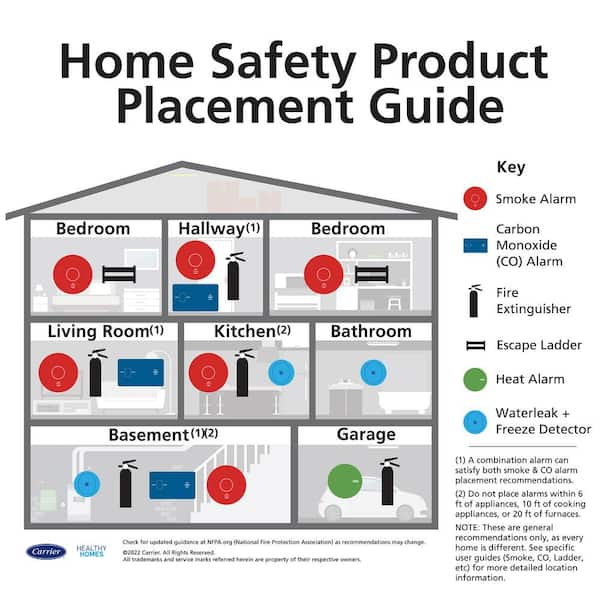
While proper fuel selection and handling form the first line of defense, the operational environment of your kerosene stove is the second. The combustion process, even with the purest K-1 kerosene, consumes oxygen and produces byproducts, the most dangerous of which is carbon monoxide (CO). Managing this reality is not optional; it is a matter of life and safety.
Indoor Air Quality Management
A kerosene heater is an oxygen-consuming appliance. Its safe operation is entirely dependent on a continuous supply of fresh air to support complete combustion and to disperse any minor emissions. A sealed, modern home can become a dangerously airtight box without deliberate intervention.
Ventilation Requirements for Safe Operation
The rule is simple and absolute: you must provide a permanent source of fresh, outdoor air whenever the stove is in use.
- Provide a Fresh Air Source: This is most effectively achieved by opening a window or a door in the same room where the heater is operating. The opening need not be large; an gap of approximately one inch is generally sufficient to create the necessary cross-ventilation. This opening should be maintained for the entire duration of the heater’s operation.
- Oxygen Consumption Requires Replacement: The flame inside your stove requires a steady flow of oxygen to burn the fuel cleanly and efficiently. In an enclosed space, the heater will gradually deplete the available oxygen. Without a fresh air supply, the combustion becomes incomplete, leading to a sharp increase in the production of carbon monoxide and soot.
- Proper Ventilation Prevents Buildup: The primary function of this constant air exchange is to prevent the dangerous accumulation of carbon monoxide. The fresh air inflow dilutes any trace CO produced and carries it safely out of the living space, ensuring the air you breathe remains safe.
Carbon Monoxide Detection and Prevention
Ventilation is your proactive measure, but given the stakes, a passive, always-active monitoring system is your essential backup. Carbon monoxide is often called the “silent killer” for a reason.
Essential Safety Equipment
Your kerosene stove and a carbon monoxide detector are an inseparable pair. One cannot be used without the other.
- Always Operate with a Working CO Detector: A battery-operated or plug-in carbon monoxide detector with a digital display should be installed in the same room as the kerosene stove. Test its batteries monthly and replace the entire unit according to the manufacturer’s expiry date, typically every 5-7 years. This device is your final, critical safety net.
- CO is an Invisible, Odorless Threat: Carbon monoxide is a poisonous gas that is completely undetectable by human senses. It binds to hemoglobin in your blood more effectively than oxygen, leading to oxygen deprivation, which can cause unconsciousness and death with little to no warning. Symptoms of low-level exposure, such as headache, dizziness, and nausea, are often mistaken for the flu.
- Modern Heaters Minimize Production: It is important to note that a properly maintained and correctly fueled kerosene stove, operating with adequate ventilation, produces very low levels of carbon monoxide. Modern wick-based heaters are engineered for clean-burning technology, which, when combined with K-1 kerosene, promotes near-total combustion, thereby minimizing CO production as a matter of design. However, “minimized” is not “eliminated,” making the detector non-negotiable.
For homeowners seeking peace of mind, modern stoves are increasingly designed with safety at their core. The 2025 EcoBlaze Portable Stove, for instance, not only operates with high combustion efficiency for low emissions but also features an optional integrated CO sensor that can provide an added layer of monitoring. Explore its advanced safety engineering here: https://www.ecoblaze-stoves.example/kerosene-safety.
【Fire Prevention and Emergency Preparedness】
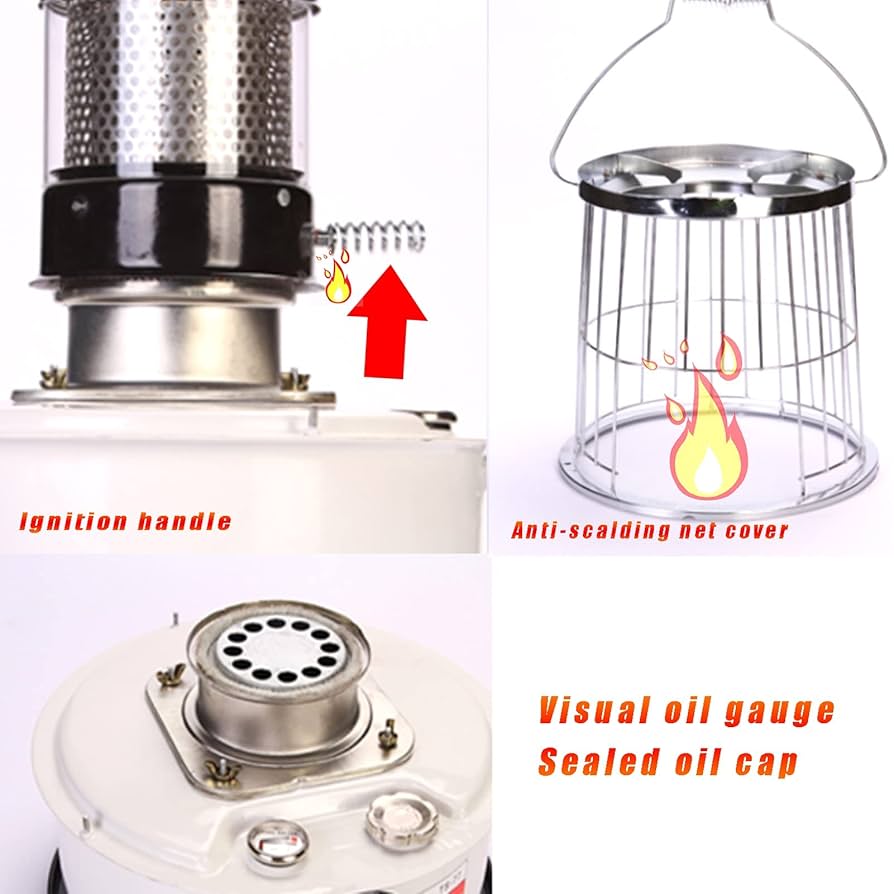
A clean and well-maintained stove is a safer stove, but its physical placement and the environment around it are equally critical to preventing the most immediate danger: fire. The principles of fire prevention are straightforward, yet their consistent application is what separates safe operation from catastrophe.
Fire Prevention Strategies
The goal is to create a controlled, isolated zone for the heater’s operation, where its radiant heat and open flame cannot interact with anything that can burn. Complacency is the primary enemy here; a space that seems safe can quickly become hazardous if these boundaries are not rigorously maintained.
Clearance and Placement Guidelines
The three-foot rule is the non-negotiable foundation of kerosene stove safety. This distance must be measured in all directions—front, back, sides, and above—from any part of the stove.
| Object to Avoid | Minimum Clearance | Rationale |
|---|---|---|
| Furniture, Curtains, Bedding | 3 feet (1 meter) | Prevents radiant heat from igniting common household combustibles. |
| Walls & Cabinets | 3 feet (1 meter) | Prevents heat buildup and potential ignition of wall materials. |
| Papers & Clothing | 3 feet (1 meter) | These lightweight, flammable items can be ignited by a single spark or intense radiant heat. |
| Children & Pets | 3 feet (1 meter) | Creates a safety buffer to prevent accidental contact burns or tipping. |
Furthermore, the stove must only be operated on a stable, level, and non-flammable surface. A tile floor, a concrete basement slab, or a dedicated hearth pad are ideal. Never place the unit on a wooden table, a carpet, or vinyl flooring that could melt or burn. When cooking, avoid using oversized pots or kettles that can extend beyond the stove’s guard and are prone to tipping, potentially directing the flame onto the handle or surrounding materials.
Emergency Heating Solutions and Backup Planning
For many, a kerosene stove is not merely a convenience but a vital piece of emergency equipment, providing life-sustaining heat during a winter power outage. In this role, its reliability is paramount, and that reliability is a direct product of diligent maintenance and preparation.
Winter Heating Safety Protocols
A kerosene heater offers invaluable off-grid heating capability, but using it safely in an emergency requires pre-planning. The chaos of a power failure is not the time to discover your stove is clogged with old fuel or that your fuel has degraded.
- Proper Maintenance Ensures Emergency Readiness: The cleaning and maintenance rituals described earlier are your guarantee that the stove will start and operate safely when you need it most. A stove with a dirty wick or a tank contaminated with sludge will be unreliable at best and dangerously inefficient at worst.
- Cold Weather Preparedness Includes Fuel Rotation: Storing a sealed container of fresh, clear K-1 kerosene is a key part of a winter preparedness kit. Fuel should be rotated, using the oldest stock first, to ensure it burns cleanly. Water condensation in stored fuel tanks is a common cold-weather issue that can be mitigated by using fuel stabilizers and keeping containers full to minimize air space.
- Pre-Season Equipment Testing: Before the heating season begins, and certainly before an anticipated storm, conduct a full test of your equipment. This includes cleaning the stove, inspecting the wick, filling it with fresh fuel, and operating it outdoors for a short period to ensure it lights and burns correctly with a steady, blue flame. This practice run confirms your readiness and familiarizes you with the startup procedure under calm conditions.
For those who rely on their stove for emergency heat, choosing a model designed for reliability is crucial. The 2025 EcoBlaze Portable Stove is engineered not only for clean combustion but also for long-term storage readiness, with a corrosion-resistant tank and a precision wick mechanism that resists clogging. Its robust design makes it a dependable core of any family’s emergency plan. Learn more about its features for reliable backup heating: https://www.ecoblaze-stoves.example/kerosene-safety.
【Troubleshooting Common Kerosene Heater Issues】
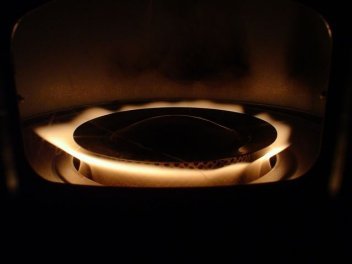
A well-maintained stove is a reliable one, but even with diligent care, performance issues can arise. Learning to diagnose these problems is a critical aspect of safe operation, as many common symptoms are not mere inconveniences but signals of potentially hazardous conditions. Addressing them promptly and correctly ensures your heater remains an efficient source of warmth rather than a source of pollution or danger.
Performance Problem Diagnosis
The flame of a kerosene heater communicates its state of health. A properly functioning stove will produce a quiet, steady, blue-to-yellow flame with minimal visible smoke or odor. Deviations from this are key indicators of an underlying issue that requires attention.
Identifying and Resolving Common Issues
-
Strong Odor: A persistent, sharp kerosene smell during operation is a common complaint and a significant safety concern. This almost always indicates one of two problems. First, and most critically, the use of the wrong fuel type, such as gasoline or “clear” diesel, which have lower flashpoints and produce toxic, explosive vapors. Only ever use 1-K grade kerosene. Second, a dirty or clogged wick that is not drawing fuel properly can cause incomplete combustion at the base, leading to raw fuel vaporizing and escaping into the room. The solution is to extinguish the stove, let it cool completely, and trim the wick to expose fresh, porous material, or replace it entirely if cleaning is ineffective.
-
Black Smoke: The production of thick, black soot (smoke) is an unambiguous sign of incomplete combustion. This occurs when the fuel-to-air ratio is incorrect. The most frequent cause is a wick that has been adjusted too high, creating an overly rich fuel mixture that cannot burn cleanly. Lowering the wick height will typically resolve this. If the problem persists, the fuel itself may be contaminated with dirt, water, or algae, or the wick may be old and carbonized, unable to draw fuel correctly. In these cases, draining the tank and refilling with fresh 1-K kerosene and replacing the wick is necessary.
-
Difficulty Lighting: If the stove is hard to light or the flame will not travel evenly across the wick, the wick is the primary culprit. Over time, the top of the wick becomes hardened with carbon deposits, forming a crust that prevents the capillary action needed to draw fuel to the tip for ignition. While minor crust can be scraped away, persistent difficulty lighting typically requires a full wick replacement. A wick that is frayed, damaged, or has absorbed contaminants will also fail to light properly.
Heater Inspection Checklist
Transitioning from reactive troubleshooting to proactive inspection is the hallmark of responsible ownership. A systematic pre-season check, conducted before you need to rely on the heater, ensures it will operate safely and efficiently throughout the cold months.
Pre-Season Maintenance Protocol
Before the first use of the season, follow this checklist to verify your heater’s condition:
-
Inspect the Wick: Carefully remove the wick assembly and examine it thoroughly. Look for any signs of hardness or heavy carbon buildup at the top. Check the edges for fraying, unraveling, or an uneven surface. A good wick should be uniformly fibrous and pliable. If you detect any hardness, significant carbon deposits, or frayed edges, replace the wick. Do not attempt to operate the stove with a compromised wick.
-
Clean Inside and Outside: With the wick removed, use a vacuum with a soft brush attachment to gently remove any accumulated dust, lint, or cobwebs from the inside of the burner assembly and the fuel tank area. Wipe down the entire exterior of the stove with a damp cloth to remove surface grime. Pay special attention to the vents and air inlets, as blockages here will disrupt the air supply needed for clean combustion.
-
Verify Anti-Tip Shutoff Mechanisms Function Correctly: This is a critical safety test. On a stable, level surface, carefully tilt the stove to the side (without fuel in it, if possible). You should hear a distinct click as the tip-over safety switch engages, which would normally snuff out the flame. Test this from multiple angles. If the mechanism is sluggish, stuck, or fails to activate, the stove must be serviced by a qualified technician before use.
For homeowners seeking a heater that simplifies maintenance, the 2025 EcoBlaze Portable Stove features a quick-disconnect wick assembly for easy inspection and a built-in diagnostic indicator that alerts users to common performance issues. Its design prioritizes long-term reliability with minimal fuss. For a detailed look at its maintenance features, visit: https://www.ecoblaze-stoves.example/kerosene-safety.
【Long-Term Maintenance and Safety Compliance】

Transitioning from seasonal troubleshooting to a long-term perspective is what separates adequate maintenance from true stewardship of your equipment. The longevity and, more importantly, the ongoing safe operation of a kerosene stove are not merely functions of how you clean it, but of the fundamental choices you make regarding its fuel and the integrity of its physical construction. Adhering to a strict, evidence-based protocol in these areas is the most effective way to prevent performance degradation and mitigate long-term risks.
Fuel Quality Standards and Equipment Longevity
The fuel you choose is the lifeblood of your stove, and its quality directly dictates the health of the entire system. Compromising on fuel standards is a decision that guarantees a cascade of operational and safety problems over time.
Ensuring Clean Burning Fuel Performance
The single most critical rule for kerosene heater maintenance is the exclusive use of high-purity, water-clear 1-K grade kerosene. This specification is not a suggestion but a requirement for the safe and efficient operation of indoor, unvented appliances.
-
Use only K-1 Kerosene: 1-K grade kerosene is refined to a much higher standard than other grades, with severely limited sulfur content and impurities. This purity is essential for complete combustion, which minimizes the production of carbon monoxide, sulfur dioxide, and fine particulate matter (soot) that can pollute your indoor air and coat the interior of your stove.
-
Avoid Red-Dyed Kerosene: It is imperative to avoid red-dyed kerosene, which is typically 2-K grade. This fuel contains significantly higher levels of sulfur and other contaminants. While it may be acceptable for certain outdoor or industrial equipment, burning it in an indoor heater releases harmful levels of sulfur dioxide—a corrosive gas that is hazardous to health and damaging to the stove’s internal components. The dye itself can also contribute to wick clogging.
-
Prevent Contamination and Damage: Using improper or contaminated fuel is a primary cause of wick contamination and damage. Impurities do not burn cleanly; instead, they bake onto the wick’s fibers, creating a hardened, carbonized crust that impedes capillary action. This leads to the very performance issues—difficulty lighting, strong odors, and black smoke—that shorten the wick’s lifespan and compromise the stove’s safety. Proper fuel selection is the first and most effective form of preventative maintenance.
Structural Integrity and Material Standards
The physical design and materials of a kerosene stove are not arbitrary; they are the result of rigorous safety engineering intended to contain high temperatures and flammable liquid. Any deviation from these standards introduces unacceptable risk.
Equipment Safety Verification
Before even considering the operation of a kerosene stove, a thorough inspection of its physical construction is non-negotiable. This verification ensures the basic safety systems are intact.
-
Only Metal Body Construction: A certified kerosene stove for indoor use must feature a body and critical components constructed primarily of metal. The use of fiber, plastics, or rubber in the main body or combustion chamber is a severe safety violation. These materials cannot withstand the operating temperatures of the stove and can melt, warp, or ignite, leading to a structural failure and fire. Always verify that your stove is of all-metal construction where it counts.
-
No In-House Modifications: Under no circumstances should any user-made modifications be performed on a kerosene stove. This includes drilling new air holes, altering the wick adjustment mechanism, or attempting to “fix” a damaged fuel tank. Such modifications irrevocably compromise the engineered safety margins of the appliance, potentially leading to uncontrolled flames, fuel leaks, or catastrophic failure. If a stove is not functioning correctly with proper maintenance, it should be serviced by a qualified professional or replaced.
-
Double Burner Stove Safety: While available on the market, double-burner kerosene stoves are generally not recommended for residential safety reasons. Their design often results in a significantly higher heat output and fuel consumption rate within a single unit, which can more rapidly deplete oxygen in a room and increase the concentration of combustion by-products if adequate ventilation is not strictly maintained. For most home environments, a single, properly sized burner is the safer and more manageable choice.
For those prioritizing long-term safety and compliance, the 2025 EcoBlaze Portable Stove is engineered to these exacting standards. Its body is constructed entirely from certified high-grade steel, and it is designed to operate exclusively and efficiently with 1-K kerosene, featuring a fuel system that resists contamination. To review its construction and material specifications, you can find more information at: https://www.ecoblaze-stoves.example/kerosene-safety.
【Creating a Comprehensive Safety Culture】
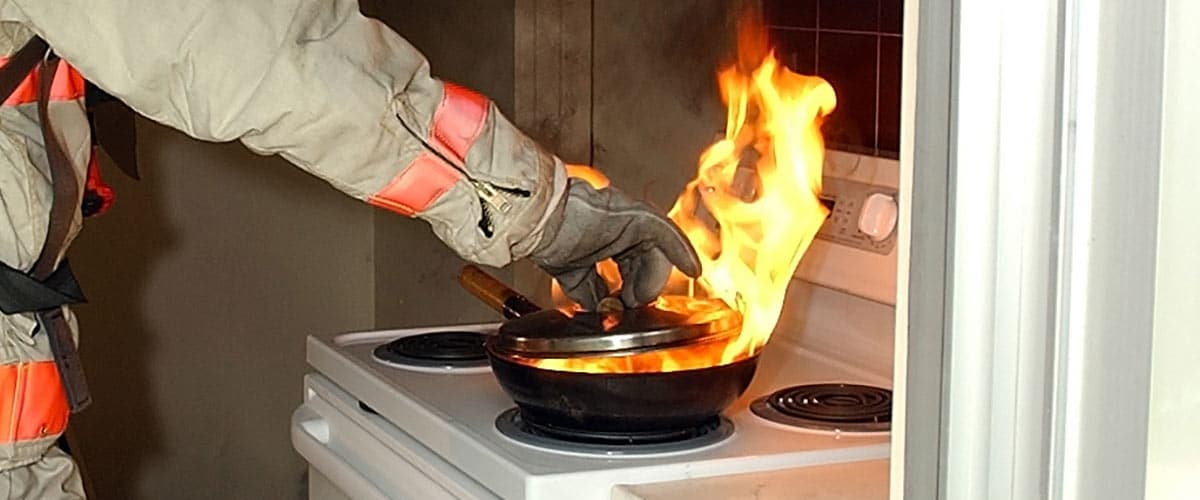
Adherence to fuel and material standards forms the foundation of kerosene stove safety, but it is the daily, habitual practices of the user that ultimately determine risk levels. A safety culture is not a checklist but a consistent mindset, where vigilance and preparedness become as routine as lighting the stove itself. This involves embedding safe operating habits into every use and having a clear, practiced plan for the unlikely event of an emergency.
Developing Safe Operating Habits
The greatest safety feature of any appliance is an attentive and educated operator. Safe habits are simple to learn but must be applied without exception to be effective.
Routine Safety Practices
Establishing and strictly following a set of core rules mitigates the most common and dangerous scenarios associated with kerosene stove use.
-
Never leave an operating heater unattended or running during sleep. An active stove requires active supervision. You must be present and alert to notice any changes in flame pattern, odor, or performance. A stove should be extinguished before leaving the room for an extended period and always before any occupant falls asleep. The risks of a malfunction in an empty or sleeping household are catastrophic.
-
Perform kerosene stove cooking only on stable, non-flammable surfaces. The ideal location is a dedicated kitchen countertop or platform made of stone, tile, or metal. The stove must be placed well away from curtains, wooden cabinets, paper towels, or any other combustible materials. A minimum clearance of three feet from any wall or flammable item is a prudent rule. This prevents accidental ignition from radiant heat or a stray spark.
-
Conduct regular safety reviews and family education. All members of the household who may operate or be near the stove should understand its basic operation and the fundamental safety rules. A brief, periodic review of how to properly light, adjust, and extinguish the stove, along with a discussion of what to do in an emergency, ensures everyone is a participant in maintaining a safe environment.
Emergency Response Preparedness
Despite all precautions, preparedness for a potential incident is a critical component of safety. The correct equipment and knowledge can prevent a small incident from becoming a major disaster.
Fire Safety Equipment Requirements
Having the proper fire suppression tools immediately accessible and knowing how to use them is non-negotiable.
-
Keep a Class B fire extinguisher accessible near the operating area. Class B extinguishers are rated for flammable liquid and gas fires, which is exactly the hazard presented by a kerosene spill or stove malfunction. It should be mounted on a wall within easy reach, but not so close that you would have to reach over the fire to access it. Ensure everyone knows its location.
-
Understand the proper use of fire blankets for fuel fires. A fire blanket can be highly effective for smothering a small, contained fire, such as one in the stove’s burner cup or a small fuel spill. The blanket should be carefully placed over the entire base of the flames to cut off the oxygen supply. Do not throw it, as this can splash burning fuel.
-
Never use water on a kerosene fire. This is a fundamental and critical rule. Water is heavier than kerosene and will sink, causing the burning fuel to splatter and spread, dramatically enlarging the fire and increasing the danger. Your response must be based on smothering the flames (with a Class B extinguisher or fire blanket) or depriving them of oxygen, not dousing them with water.
Integrating these habits and tools into your home safety plan is essential. For households seeking a stove designed with these safety principles in mind, the 2025 EcoBlaze Portable Stove includes features like a stable, wide base and a built-in safety shut-off. To see how its design supports a comprehensive safety culture, more details are available at: https://www.ecoblaze-stoves.example/kerosene-safety.
Mastering Kerosene Stove Safety: Your Path to Secure Operation
Throughout this guide, we’ve established that kerosene stove safety isn’t accidental but achieved through systematic practices. The statistics speak clearly: proper maintenance directly correlates with accident prevention. We’ve covered the essential pillars—from daily burner nozzle cleaning and tank inspection to exclusive use of K-1 kerosene and mandatory ventilation protocols. The integration of carbon monoxide detectors, maintaining three-foot clearances, and having Class B fire extinguishers accessible forms your comprehensive safety ecosystem. Remember that structural integrity matters: never modify stove components and always verify metal-body construction. These practices collectively address the root causes of malfunction while establishing layers of protection.
Your commitment to implementing these protocols transforms theoretical knowledge into practical safety. Consistent application of the daily and weekly maintenance routines prevents the dangerous accumulation of carbon deposits and fuel contamination. Adherence to fuel standards ensures clean combustion, while proper ventilation manages combustion byproducts. Emergency preparedness completes this safety framework, ensuring you’re equipped to handle unlikely scenarios. By embracing this holistic approach, you’re not just maintaining an appliance—you’re cultivating a safety-first mindset that protects your household.
Ready to enhance your safety practices with equipment designed for reliability? Share your own maintenance tips in the comments below and join our safety-focused community. For those seeking modern solutions with integrated safety features, explore how the 2025 EcoBlaze Portable Stove incorporates these principles directly into its design.




